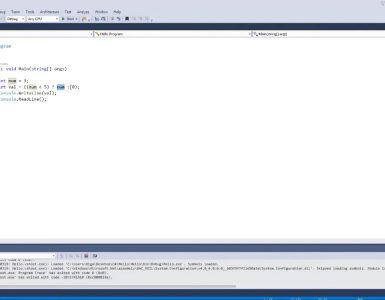It is possible to get a good job in IT without a diploma of higher education. After all, a career is successfully built not on papers, but on your own skills, the best proof of which will be real projects.
Now we’ll analyze 12 ideas for creating projects in Python, which will fit perfectly into your portfolio. And all of them are from different spheres and differ a bit in complexity.
- Clever Assistant.
One of the best projects because it shows the interviewer that you are a great Pythonist: you know how to manage resources and turn them into something useful. At the same time, you don’t need to be a super expert to create an assistant. Your knowledge of relatively simple and affordable packages will suffice.
For example, you can use Pyttsx3 to implement the function of text recognition. And with the os module you can set up music playback, application launches, etc. Automation of routine tasks and a site aggregator are good additions to the functionality of the program – they will make your project look more impressive.
But the assistant has no end point. The more varied the functions are, the more useful the result will be.
- Task Automator
Analogous to the first option, but with a bias towards automation. What kind of tasks can be automated? For example, file management: move, copy, delete and rename. Or create a script that sends birthday greetings. You can use the following libraries: Selenium (a package for automating the interaction of web browser and Python), BeautifulSoup (web scraping), win10toast (displaying Windows notifications), etc.
- Website
Creating your own website is also a great idea. You can settle on the “usual” option: a platform for making electronic payments, a learning portal, etc. But you can try to develop a resource that will automate some daily tasks. For example, the conversion of text files into audio or automatic sending of emails. Surely you can come up with many interesting and practical ideas! Just do not be afraid to implement them.
- game
Game development requires perseverance, a lot of time and skills. But what can be more exciting? A game can tell a lot about its author: his ingenuity, creativity and focus. And the quality of the product perfectly demonstrates the knowledge of programming. There are many Python libraries for those who do this kind of work: follow the link and choose what’s right for you.
- Graphical User Interface
Creating a GUI is a cool project and a great way to establish yourself in the hiring process. A GUI is a system of interaction between the software and the user. That is, what a person sees and through which he “communicates” with the software.
Go to the stores near you, find out what kind of programs they need, and create software with a GUI that meets those needs. Remember: the better the user interface, the better impression your program makes on people. This means that the chances of making good money are much higher!
Of all the Python libraries that are designed for GUI development, the most popular is Tkinter. The only disadvantage is that it is not so easy for newcomers to understand. But besides Tkinter there are many other cool GUI libraries you can learn about here.
- Computer vision system
Machine vision is one of the main modern trends. Almost all large companies in one form or another implement it in their technology. There are a lot of successful startups in this field. But the most important thing is that by implementing such a model, you will demonstrate to your employer your ability to quickly master IT innovations.
Machine vision can be used in different areas: face recognition, identification of diseases on the basis of X-rays, traffic assessment, etc. Python libraries can help you a lot when working on such software. We can advise ourselves one of the best – it is OpenCV.
- Mood Analyzer
What is mood? It’s our thoughts, emotions and feelings, which can be negative, neutral or positive. Mood analysis falls within the realm of NLP – natural language processing. Speaking of ideas, it is possible to implement an application that determines a person’s mood by the feedback he or she leaves. Such recognition is useful in many cases: for stores, sites, cafes, beauty salons, car repair shops, etc.
Here you can use such libraries as TextBlob, Natural Language Toolkit, Gensim, spaCy, and StanfordNLP.







































Add comment